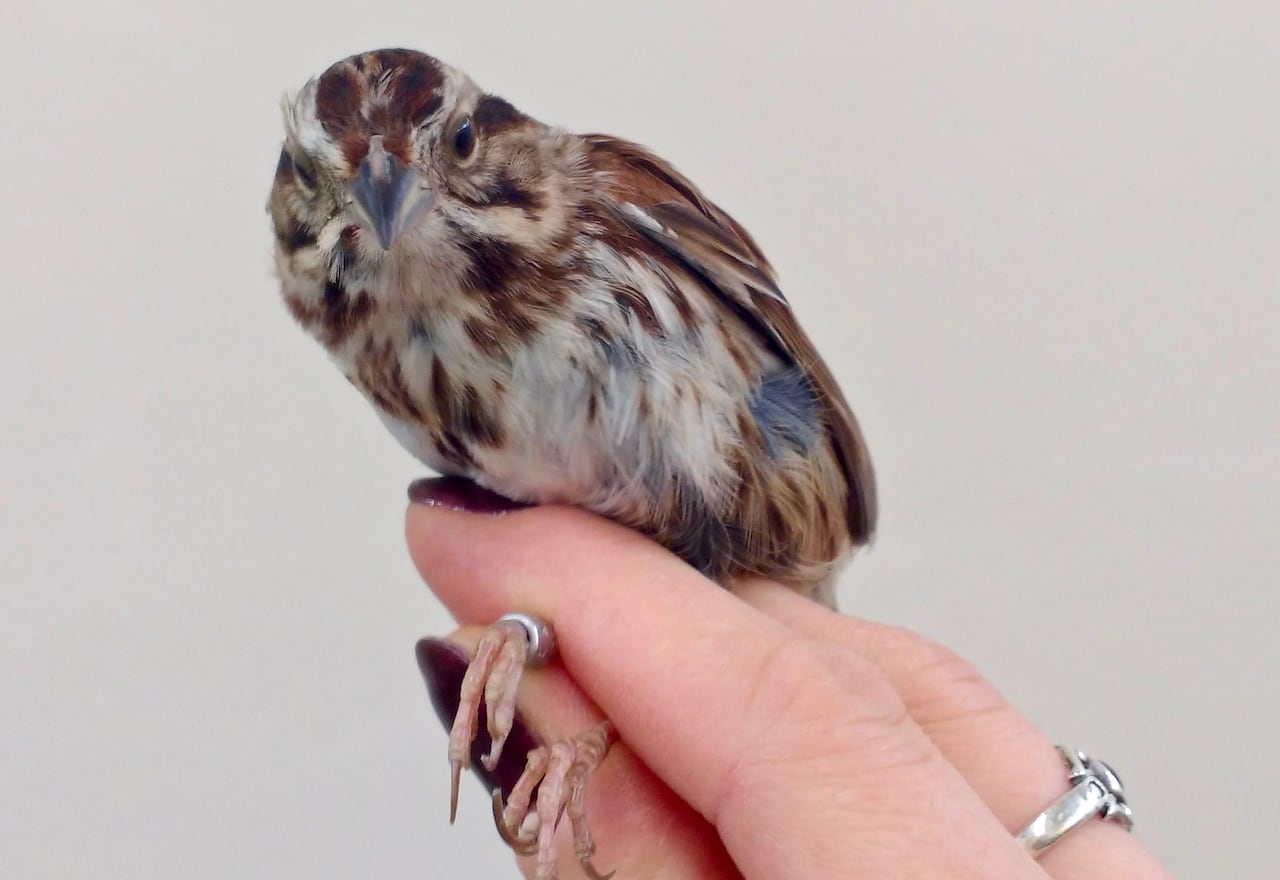The chemical romance of songbird oils
Deciphering the fowl smells of chemical communication in birds

If you've ever seen a songbird combing through its feathers, you could be watching a lustful bird putting on some genetic cologne.
It's called preen oil, a waxy substance found in the plumage of most birds.
"We used to think that the main or only function of the substance was to waterproof and help protect the feathers against water or other types of damage," said Leanne Grieves, a biologist and PhD candidate at Western University.
"But there's also a lot of information in that substance."
Now Grieve's new research indicates that preen oil can carry chemical messages to help song sparrows find better mates.
"I first started out just exploring what types of information are in their preen oil, and then whether song sparrows are maybe able to use this information," she said.
Scientists have already observed that birds often have different odour profiles based on species, sex, age, territory and stage in the mating season. Most birds secrete the oils from a nipple-like preen gland just above their tail, then use their beaks to brush it through their feathers.
But Grieves wanted to know if the common song sparrow could also chemically communicate by smell.

Smells with meaning
Grieves began by categorizing the preen oil of hundreds of birds to start her study. She soon discovered male and female song sparrows do develop distinct odour profiles.
But strangely, the changes in smell were only apparent in the oils when the songbirds were mating and parenting.
"So only when they are ready to find a mate, build a nest and start laying eggs and raising young," Grieves said. "And then you can no longer tell the sexes apart after the young have left the nest."
Next, Grieves further examined the smell of song sparrows' immune genes.
Yes, many other birds, reptiles, amphibians, fish and mammals actually have shown the ability to release and detect immune genes - including humans.
"But no one has shown this relationship yet in this tiny little songbird who we don't really think about as having a sense of smell very much at all," Grieves said.
Through her research Grieves has now shown that every song sparrow's preen oil contains a unique immune-gene profile.
That's possible because every animal with a backbone has a region in their DNA called the Major Histocompatibility Complex, or MHC for short.
Within every creatures' MHC is a hereditary selection of pathogen-recognizing proteins. They latch onto the surface of your immune cells to help them identify and attack viruses, microbes or other invaders.
"The simple way to think about it is the more alleles, or the more versions of proteins that you can make, the more pathogens you can defend yourself against," Grieves explained.
And, although scientists still don't understand the exact mechanism, smelly versions of these MHC-based molecules eventually end up in the air or water.

Following the smell of love
To figure out if song sparrows could actually use this smellable information, Grieves set up a Y-shaped maze for her feathered friends.
The birds were first given the choice to walk toward either the smell of a breeding bird of the opposite or same sex.
"And I found that male song sparrows preferred to spend time with the oil of females," Grieves said. "So they seem to be attracted to females more than males when they were ready to breed."
This indicates the birds could be using the smell of their comrades' preen oil to help identify lustful, potential mates.
Next she placed song sparrows with potential mates who had a more similar, or more different mix of MHC genes.
It turns out they actually prefer the smell of birds with more dissimilar MHC's.
The birds, she explained, might be trying to find mates with better and more compatible MHC genes in hopes of making stronger babies.
"So if the birds can find and choose a mate that's different from their MHC, then their offspring - getting half of their genes from its mom and half of its genes from its dad - should get a wider variety or a greater number of alleles," Grieves said.
Alternatively, the birds could be seeking out healthier parenting partners.
The next steps
Grieves' new objective is to figure out the mechanisms behind the birds' smelling abilities and gene preferences.
"We know that they have preferences for MHC, different kinds of MHC genotypes in their mates," Grieves said. "But we're still very much in the early stages of figuring out how they know what the genotype is."
Figuring out how the birds communicate is important because the information could help inform future conservation efforts.

Pollution, for example, can disrupt chemical communication and make it more difficult for animals to find mates, navigate home or recognize their offspring.
"I think it's important to think about whether or not these odours that the birds produce could be impacted in some way by our activities," Grieves said.
And so, Grieves and a colleague are already starting to examine the effects of mercury, a common pollutant, on the birds' sensing abilities.
"Because if it does, that might impede their ability to make these good decisions about having a good mate, or mating with the right sex or species. "